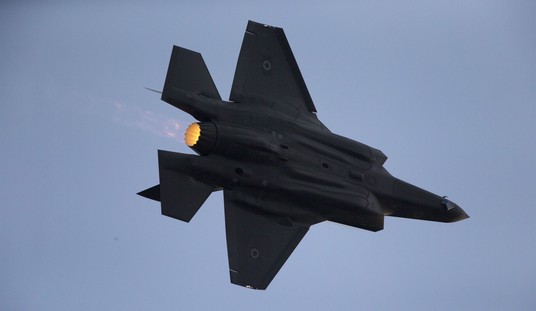In the 1970s, Universal Studios consisted of two main divisions. The TV side cranked out endless formulaic detective shows for the networks. Colombo, McMillan, McCloud, Rockford, Kojak, they all defended the Universal backlot from evil-doers. The film division seemed to specialize in endless formulaic disaster movies: the Airport franchise, Irwin Allen’s Earthquake, Steven Spielberg’s Jaws — all terrorized filmgoers, along with serving up plenty of epic cheese along the way.
So it’s not surprising that in 1975, the studio turned to the Hindenburg disaster of 1937 as a film plot: it’s Airport set in the 1930s! Robert Wise could direct — he knows his way around big movie projects! We could have a detective looking for saboteurs! We can produce the big explosion at the end in Sensurround!
The result was a typical 1970s Universal potboiler — but check out the special effects to bring the dead zeppelin back to life:
[youtube 9gAe_uK94Zs]
There’s a terrific book from 2002 titled The Invisible Art (I bought my copy at the local Borders a couple of years ago for the cover price after noticing it’s currently going for insane money on Amazon). It’s a coffee table style look at the history of matte paintings, that’s chockablock filled with large color reproductions of the classic matte paintings created throughout the history of cinema. Some shots are simply reproductions of the completed image, but many also include the original matte painting (typically painted onto a large sheet of glass), showing the area left blank for the insertion of actors, typically via rear projection.
The original idea behind matte paintings of course was that it made set production much cheaper — only a small set need be built for the actors to appear in, and the rest of the image painted around them afterward. During World War II, when government mandates forced movie studios into building sets with a minimum of raw materials, films rarely thought of as “special effects movies” such as 1944’s Since You Went Away made extensive use of matte paintings to replace large, free-standing physical sets. Flipping through The Invisible Art, it’s obvious that the aesthetics of old Hollywood also helped to sell matte paintings. From Gone with the Wind in 1939, to the great MGM musicals of the 1950s, films made during Hollywood’s golden era typically had a softer, more painterly look in general. Contrast this more aesthetically pleasing look to the harsh gritty films that became the vogue in the 1970s after Old Hollywood collapsed.
By the 1970s, thanks to his long apprenticeship to Alfred Hitchcock, matte painter Albert Whitlock was one of the unsung heroes at Universal, crafting large vistas of destroyed urban areas for films such as Irwin Allen’s Earthquake and Hitchcock’s The Birds (arguably the predecessor to the 1970s disaster movies) to be produced. Fans of a certain popular mid-1960s science fiction TV series may recognize this classic matte painting created by Whitlock for the show’s second pilot episode.
For Robert Wise’s production of The Hindenburg, most of the long shots of the airship consist of Whitlock’s matte paintings. While a large model of the Hindenburg was built for the movie, many of its appearances are a photograph of the model (which now hangs in the Smithsonian), with extra details painted in by Whitlock, and then glued to a piece of glass, which was then placed atop another Whitlock painting of the landscape below. Via stop motion animation (where the image of the zeppelin was moved a frame at a time) the Hindenburg was made to “fly” over a beautifully painted landscape of 1930s-era New York. (The end of the movie switches to black and white to allow stock footage of the infamous crash to used intercut with Scott and crew on sets; Ted Turner’s crayon-like film colorization techniques mercifully not yet invented.)
The result was one of the last big special effects movies before George Lucas’s Star Wars revitalized the moribund film industry, and revolutionized special effects. Lucas would of course create Industrial Light & Magic, his own in-house effects department, which would bring a host of new techniques to the industry during the following decade.
While the technicians at ILM adored Whitlock and other traditional matte artists, at some point in the early 1990s, traditional matte paintings began to go out of vogue, and were replaced by digital effects techniques in general. By the following decade, it was obvious that some sort of flip-over had occurred in the industry: Hollywood’s special effects technicians can seemingly create anything. It’s the writers who are now so hamstrung these days by political correctness. Stanley Kubrick once said, “If it can be written, or thought, it can be filmed.” But these days, it can’t be written or thought in Hollywood, as Brian Anderson of City Journal wrote back in 2005:
There’s a simple explanation of why Tinseltown churns out so many commercial duds. Elite filmmakers want to make moola, of course—and they still do, lots of it, though not nearly as much as they could be making. But giving the public what it wants isn’t their prime motivation. More important is their wish for recognition as artists from peers, critics, and the liberal elites, says Emmy- and Oscar-nominated writer and director Lionel Chetwynd, one of Hollywood’s most vocal conservatives. “And it has been true from the late sixties on that if you wanted to be seen as an artist, you have to be a liberal—you have to rail against the government, be edgy,” he adds. Having the right artistic vision can mean other social advantages, too. “Making something commercially successful and appealing to a broad public, like The Incredibles, is less likely to get a Rebecca Romijn look-alike to sleep with you than making dark, hard-hitting, critically acclaimed material like Million Dollar Baby,” says longtime Hollywood watcher Medved.
Further reinforcing Hollywood’s leftish leanings are liberal interest groups that monitor script content for “offensive”—read: politically incorrect—content. This pressure can utterly transform a film project, as Tom Clancy will tell you. In his novel The Sum of All Fears, Muslim terrorists explode a nuke at the Super Bowl. When Clancy optioned the book and the film went into development, the Council on American Islamic Relations got to work. The 2002 film villains: white neo-Nazis, not Muslim fanatics. Some Hollywood production companies actually have outreach offices that contact advocacy groups ahead of production to vet potential film scripts. “Keep in mind [that] one of the reasons why the FBI or the government or business are the villains is because everyone else has a constituency,” former Motion Picture Association head Jack Valenti points out.
The PC concerns, internalized in scriptwriters’ heads even before any advocate complains, can produce bizarre incoherence. Novelist and screenwriter Andrew Klavan’s True Crime is about an innocent white man on death row, railroaded because officials needed to prove that the death penalty isn’t racially biased. “The only one who figures this out is this politically incorrect journalist who can see through the B.S.,” Klavan relates. The gripping 1999 movie version, directed by and starring Clint Eastwood as journalist Steve Everett, transforms the innocent death-row inmate into a black man (played by Isaiah Washington). The movie works, even if it takes the anti-PC edge off Klavan’s novel.
Maybe the intersection occurred during a very different Universal-produced disaster movie: 1995’s Apollo 13, which combined some of the first completely digital special effects, with a pro-American plot. Or maybe 1998’s Air Force One, which starred Harrison Ford as a tough on terrorism Vietnam-era vet who knew his way around the controls of a jet aircraft. No wonder Hollywood was so appreciative the following decade when their wish was fulfilled in real life…
We take for granted the special effects employed by a series such as Mad Men — every time you see Don riding the commuter train in from Ossining, he’s sitting inside of a set in Los Angeles with the New York State exteriors greenscreened in behind him in post-production. Even innocuous shots such as the one above are loaded with period, not to mention location detail digitally added. (That’s a bank in Pasadena that was photographed on a blazing hot summer day. All that snow, and the period buildings behind it were digitally drawn and matted in.) But we don’t notice them because the show is character-driven and as exotic as 1960s New York now seems, it’s not outer space.
Moviegoers today often complain about CGI effects and long for the days when films were made via the methods employed by Albert Whitlock and crew. But are the people who complain about today’s CGI instead really longing for the days when movies featured believable adults and competent writing, and the special effects served to advance the story, and not serve as the focal point of the film?










Join the conversation as a VIP Member